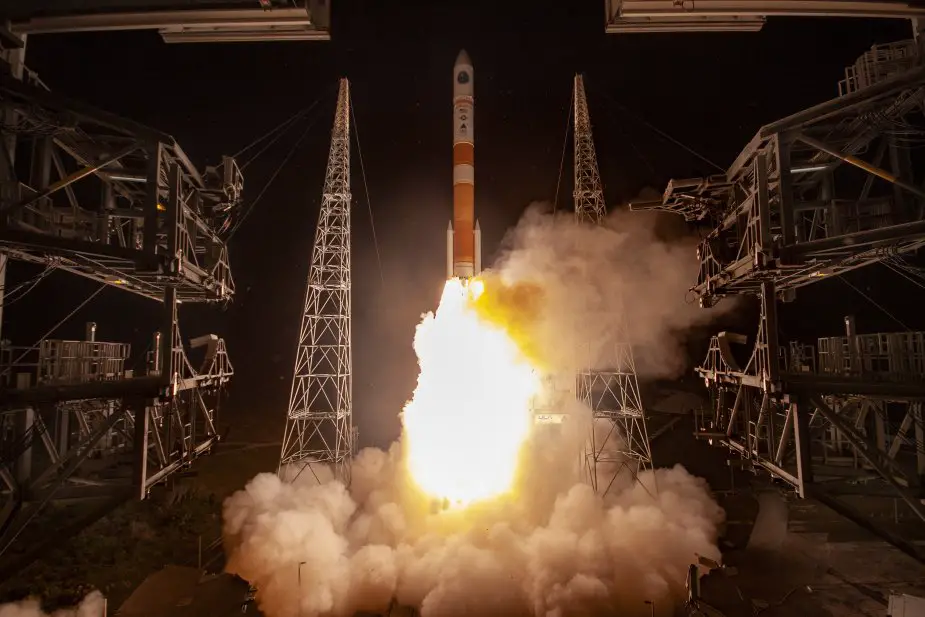Breaking news
Satellite launch enhances communications for US Army missions.
A high-capacity military communications satellite was launched Friday, March 15, in an ongoing effort to provide ground troops with the ability to send larger transmissions quicker. The satellite, which costs about $424 million, is the 10th one to join the Wideband Global Satellite Communication constellation that connects to the Defense Information Systems Network. Sean Kimmons, Army News Service, reports.

A Delta IV rocket carrying the Air Force's Wideband Global Satcom-10 satellite lifts off from Space Launch Complex-37 at Cape Canaveral Air Force Station, Fla., March 15, 2019. The high-capacity military communications satellite is part of an ongoing effort to provide ground troops with the ability to send larger transmissions quicker (Photo Credit: United Launch Alliance)
It was launched from Cape Canaveral Air Force Station in Florida aboard a Delta IV rocket. "Bandwidth capacity and demand continue to increase," said Col. Enrique Costas, project manager for Defense Communications and Army Transmission Systems. "And as we know, WGS is the workhorse of the [Defense Department]." The colonel's office -- which falls under Program Executive Office Enterprise Information Systems, or PEO EIS -- manages strategic satellite and terrestrial communications programs worth over $3 billion.
The WGS constellation can process more than 3.6 gigabits per second of data for strategic and tactical users -- 10 times more than the previous system. It operates at both X-band and Ka-band, which can enable networks for C4ISR: tactical command, control, communications, computers, intelligence, surveillance, and reconnaissance. "It's extremely reliable and it has a lot of bandwidth capacity," Costas said.
For Soldiers on the battlefield, that could mean faster, better decision making. A high-value target, for instance, is identified by an unmanned aerial vehicle, which transmits video and data to an operations center via reliable bandwidth from the satellites. "I need to transmit that signal from the point of collection all the way back to the center, where the decision is going to be made to whether or not to pull the trigger or deploy a team," Costas said. An uninterrupted, secured communications link is also needed during critical missions on the national scale.
Another example, he said, could be an order given by the U.S. president to a combatant commander to conduct a time-sensitive mission. "I want to make sure that that signal does not go down at any time during that conversation to make a critical decision," he said.
Based at Fort Belvoir, Virginia, his office helps provide ground infrastructure and control capabilities to assure communications through the WGS constellation and legacy Defense Satellite Communications System constellation. Soldiers from the 53rd Signal Battalion manage five Wideband SATCOM Operations Centers providing global transmissions and payload control of the WGS and DSCS constellation.
The capabilities these satellites give Soldiers, he added, fits well with where the Army is heading in its future fighting concept of multi-domain operations. "SATCOM is one of the ingredients of transmitting communications reliably … to fight and win our nation's wars," Costas said. "These constellations give us global access, global bandwidth transmission for all those mission sets or battlefield domains."
While multi-domain operations will heavily rely on partners, SATCOM is no different. "This is a team effort across DOD, in partnership with the Air Force and industry partners," he said. "We cannot get to this day to day without the close collaboration between industry, the other service components, specifically the technical prowess from the Air Force to put this into orbit, so we can then go to work."


























